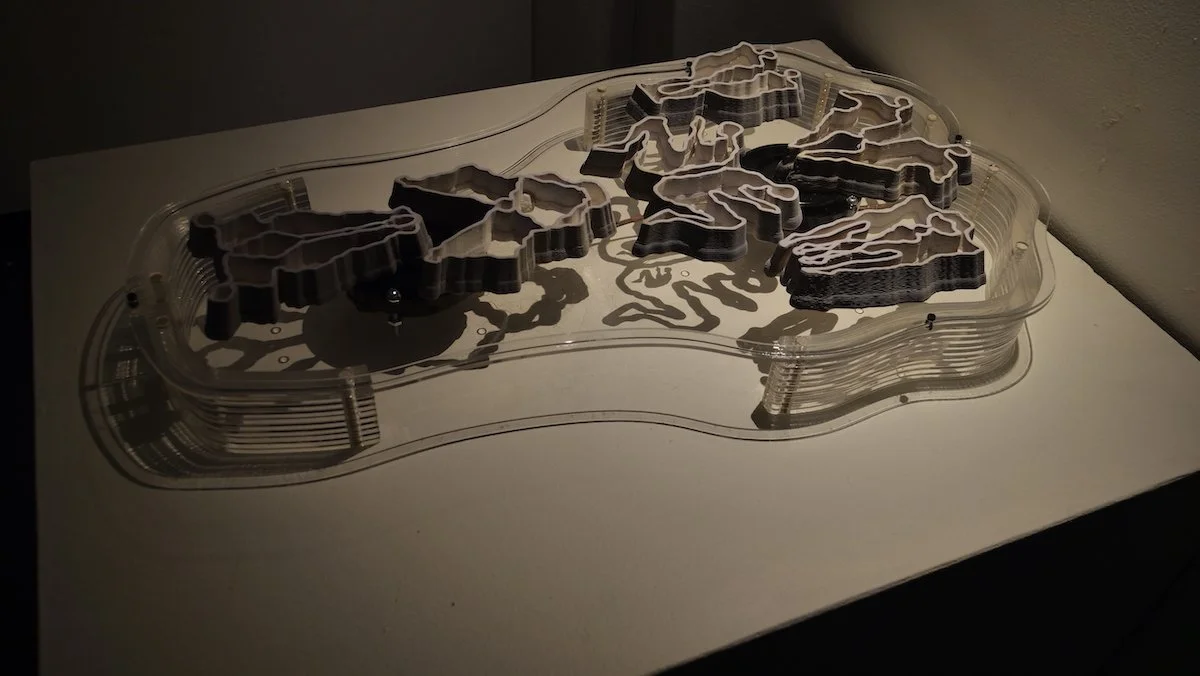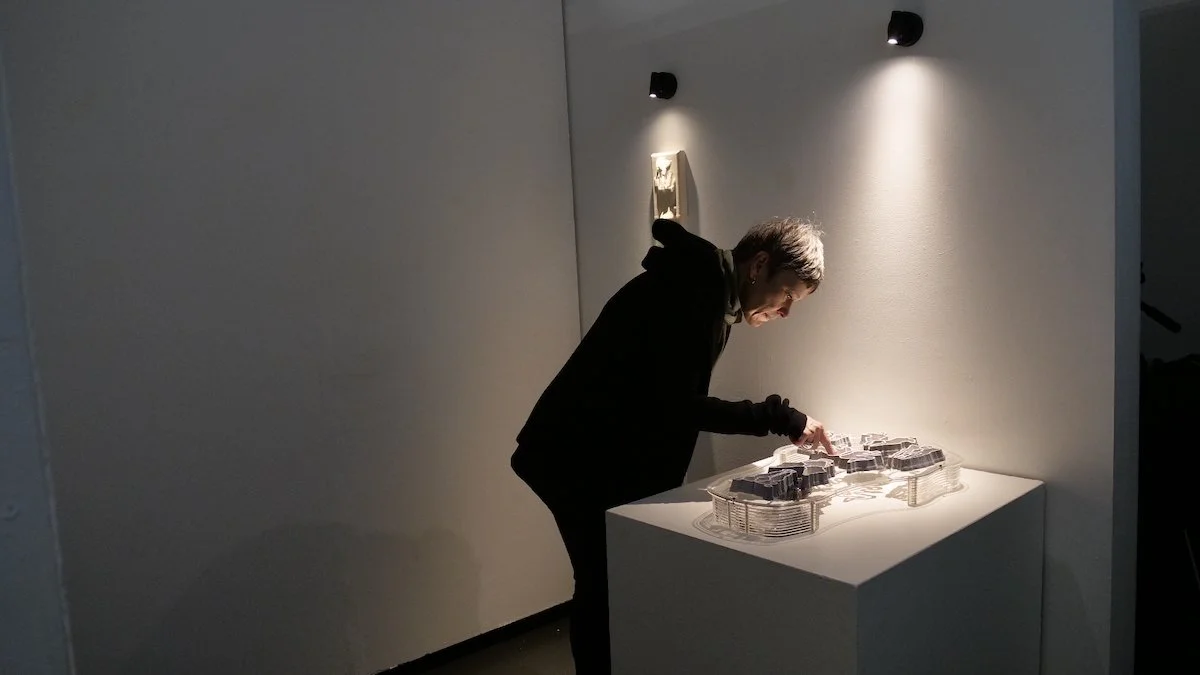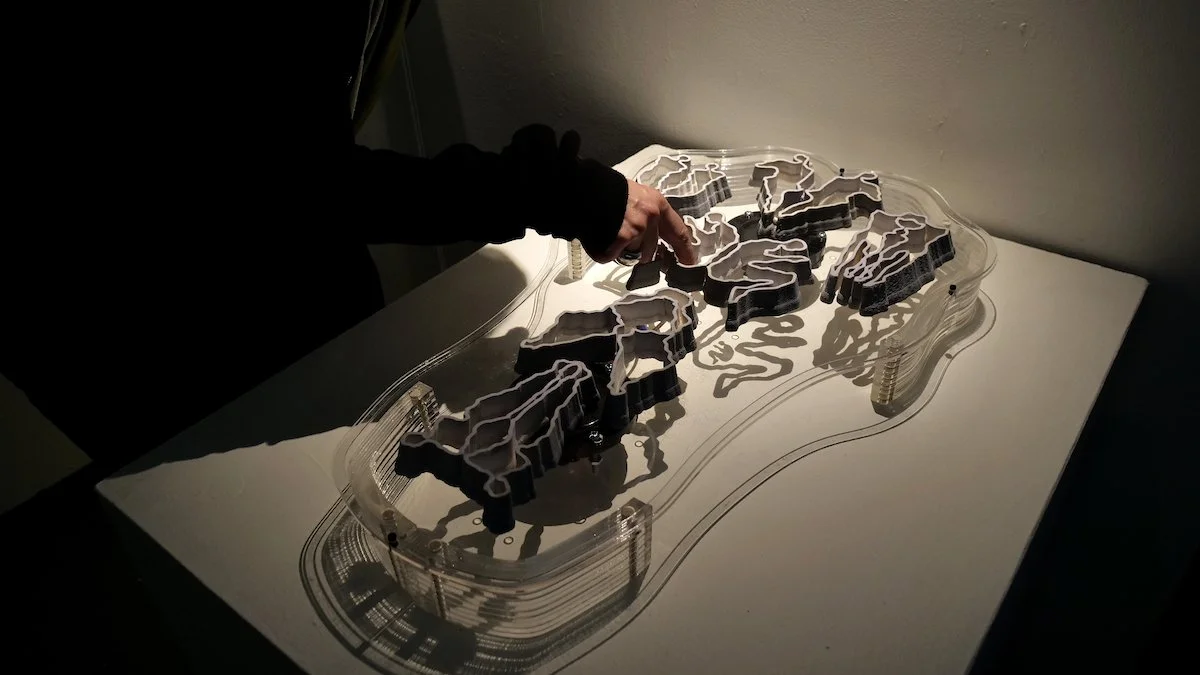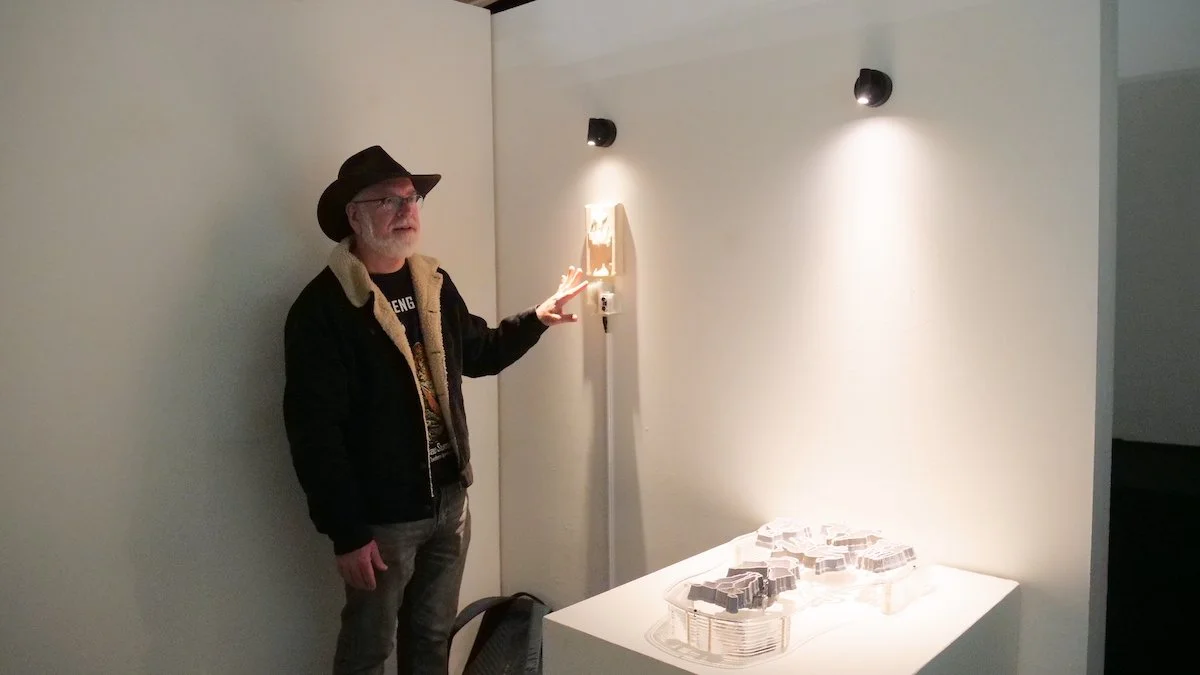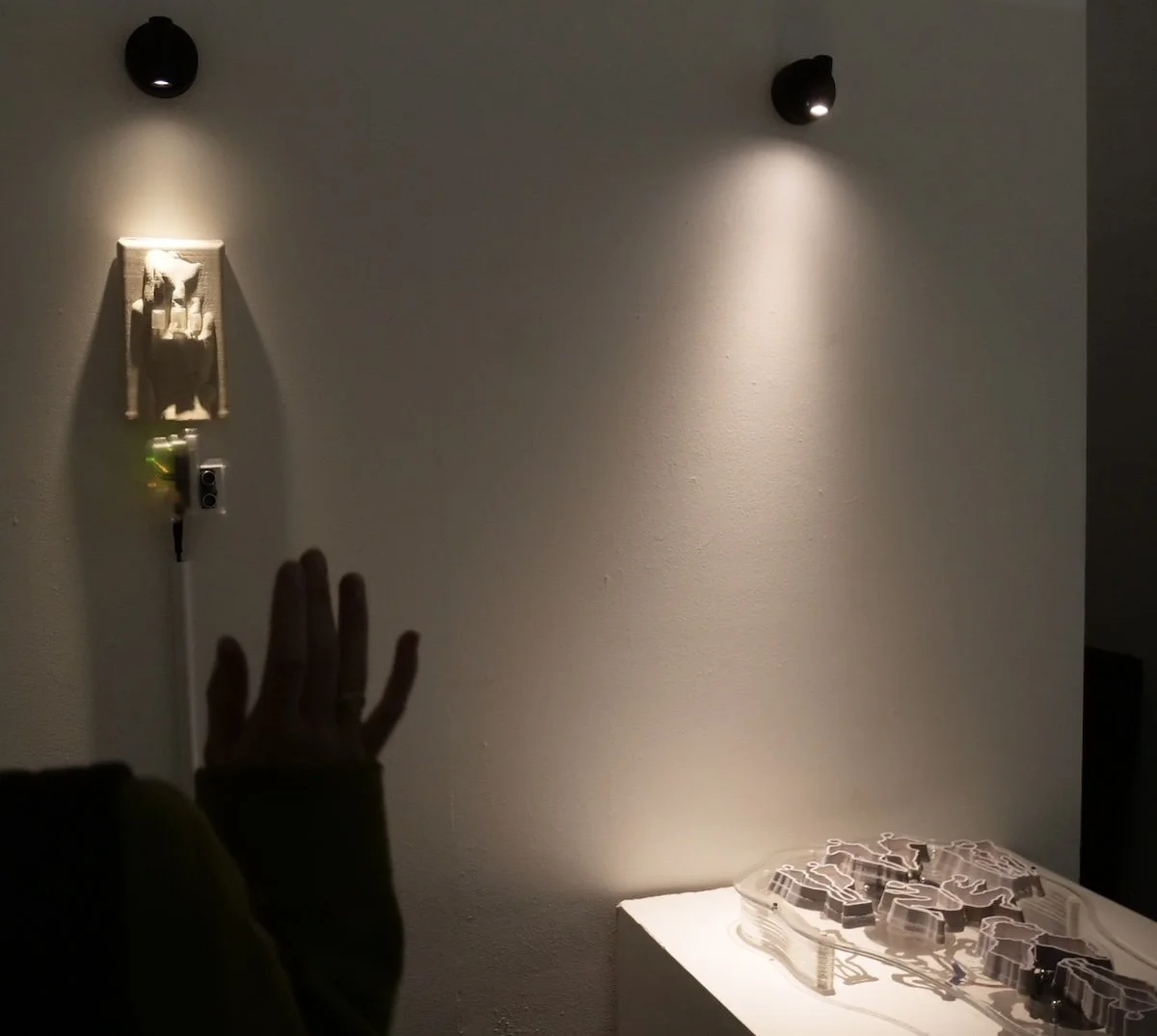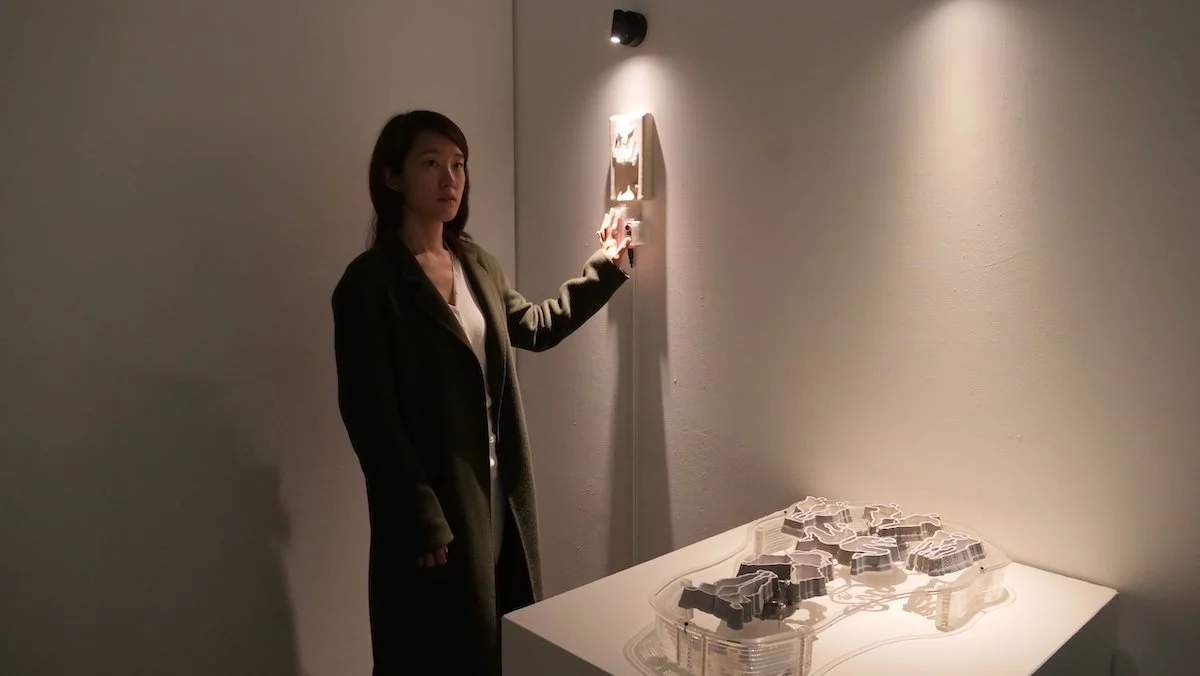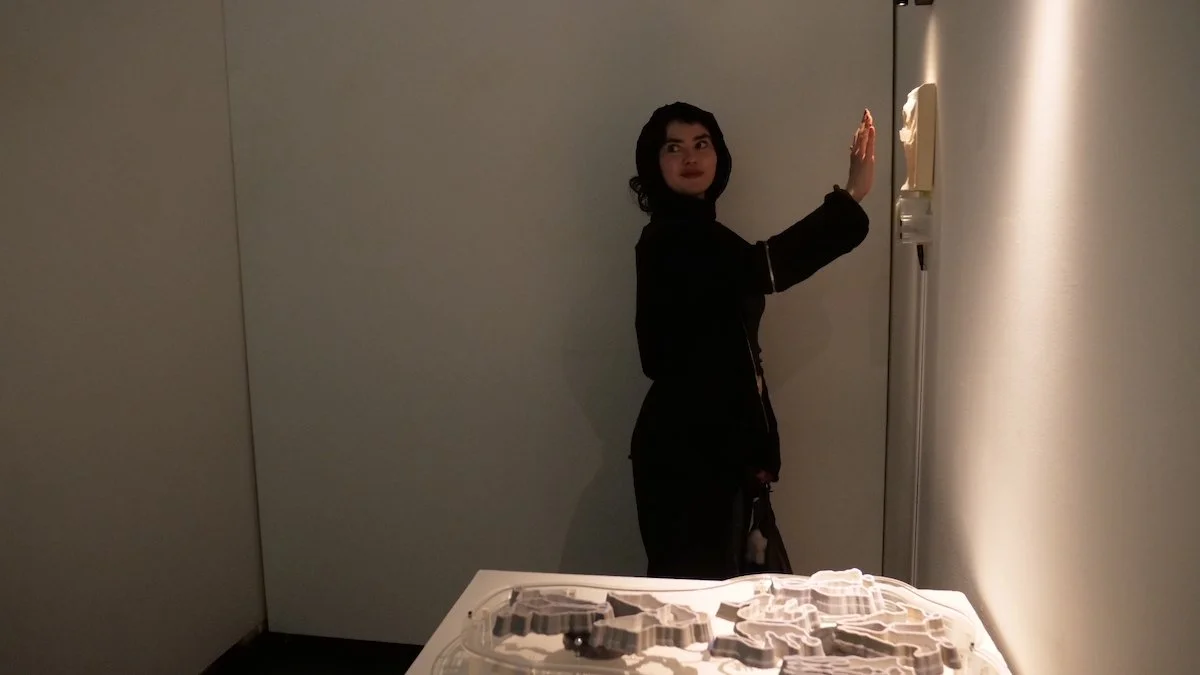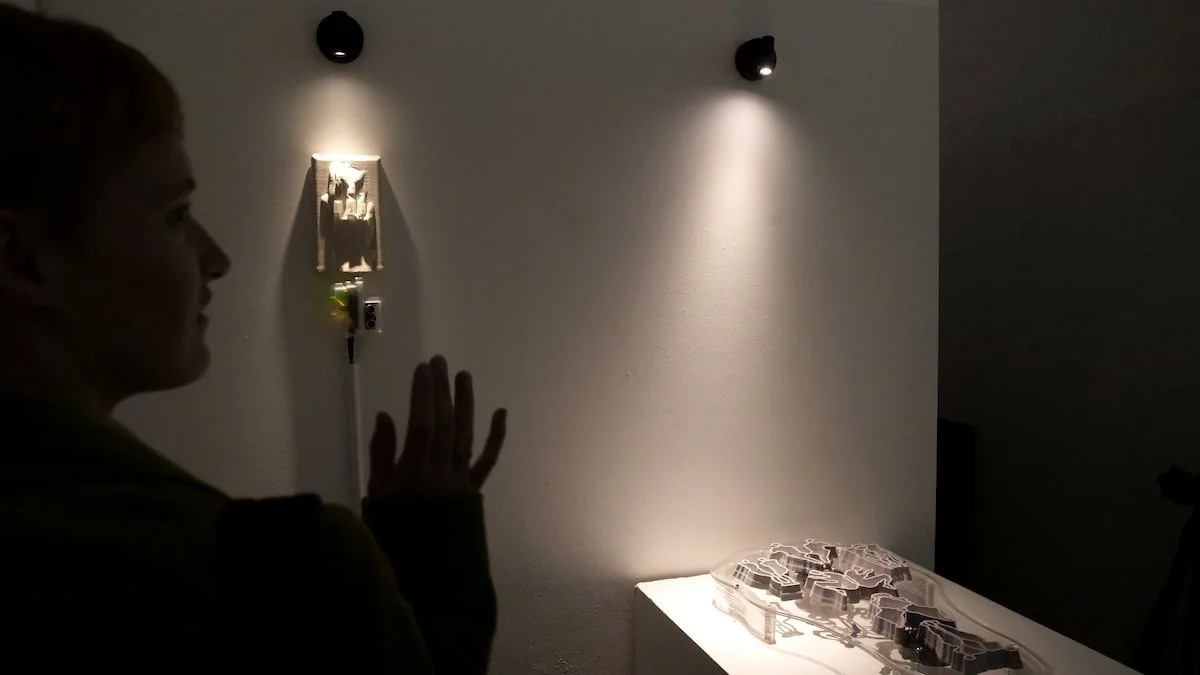Isolated Utopia
Interactive Installation
Digital ceramic, Sand, Acrylic plate, 2-Channel Amplifier, Arduino, Projection, Sound
2024
The advancement of network technology has facilitated social connections for humanity, while also breaking down the boundaries of space. Yet, what have we lost in exchange for the infinite radius of activity unrestrained by physicality? Isolated Utopia portrays a utopia where plurality and the public sphere have vanished, prompting a reconsideration of the hollow society that technology could create and the values that may be lost as a result.
In the future world, humanistic "solidarity" will be replaced by technological "connectivity", granting humanity the power to create a private world transcending the constraints of time and space. However, it will also construct a "a void (hollow world)" for individuals thoroughly separated physically yet harboring a hollow belief of togetherness.
This "technological void" will cast doubt on the necessity of the public sphere. Immersed in their own worlds, individuals will lose the multiplicity derived from relations with others, leaving only an isolated self riddled with self-absorption. Society will lose the diverse interactions and plurality of communities, rendering political freedom a worthless echo as it declines. Isolated Utopia depicts how such ‘technological void’ will ultimately threaten human freedom through the irony of complete isolation in a private world.
Grounded in Hannah Arendt's concept of "world alienation" presented in "The Human Condition," Isolated Utopia questions the fragility that may arise for individuals and society when plurality and the world of intersubjective experiences are lost. Isolated Utopia reflects concerns about a future where "freedom," "plurality," and "solidarity" are sacrificed for the productivity and affluence brought by technological progress. It visually expresses a "a void (hollow world)" where humans dwell solely in "their own bodies," departing from "the (genuine) earth."
